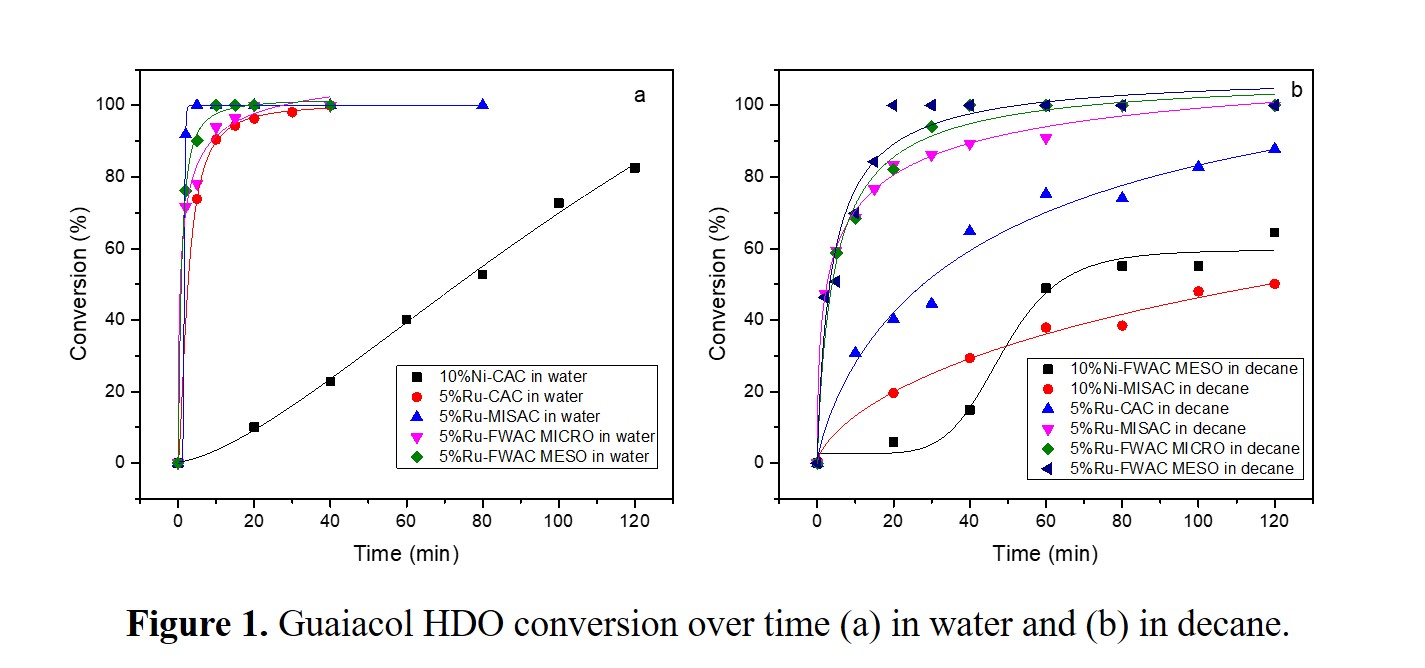(729c) Hydrodeoxygenation of Guaiacol Using Ni and Ru on Various Activated Carbon Supports in Aqueous and Organic Solutions
AIChE Annual Meeting
2020
2020 Virtual AIChE Annual Meeting
Catalysis and Reaction Engineering Division
Catalysis in Liquid Media II: Biomass Conversion
Wednesday, November 18, 2020 - 8:30am to 8:45am
The production of clean and sustainable energy has been a critical concern recently due to the increasing global energy consumption. Biomass is an abundant and renewable resource that can be transformed into fuels via pyrolysis [1]. However, the bio-oil has undesired properties, such as high concentration of oxygenates, high viscosity and low heating value. Hydrodeoxygenation (HDO) is the upgrading of bio-oils, using H2 at high pressures and in the presence of catalysts [2]. Carbon materials have shown great advantages for HDO reactions over other supports due to their low cost, high surface area, high hydrothermal stability. However, the effect of solvents and the properties of carbon supports during the liquid phase HDO reactions remain unclear. In this study, guaiacol, a common oxygenate in bio-oil, was selected as a model compound for HDO reactions using Ni and Ru metals on activated carbon (AC) in aqueous and organic systems. The ACs were derived from food waste (FWAC), miscanthus (MISAC) and commercial resources (CAC) and they were characterized using various techniques. The liquid phase HDO reactions of guaiacol were carried out in a Parr autoclave reactor using either water or decane as solvent. Adsorption experiments of guaiacol on catalysts were also performed via diffuse reflectance infrared Fourier Transform spectroscopy (DRIFTS) to investigate the interaction between guaiacol and the catalysts. Our results suggested that Ru was more active than Ni and that AC supports with high mesoporosity were beneficial to HDO reactions. In addition, the hydrophobicity of AC supports could remarkably impact the reaction pathways of guaiacol. The overall conversion of guaiacol HDO by different catalysts are summarized in Figure 1.
[1] D.P. Gamliel, G.M. Bollas, J.A. Valla, Energy Technol. 5 (2017) 172–182.
[2] D.P. Gamliel, B.P. Baillie, E. Augustine, J. Hall, G.M. Bollas, J.A. Valla, Microporous Mesoporous Mater. 261 (2018) 18–28.
